Valerie Robinson created a literate environment in her K-3 classroom by applying research-based practices. She got to know her literacy learners through assessments like the ERAS and DIBELS. Robinson selected age-appropriate texts in different genres aligned with standards. Her literacy instruction incorporated the interactive, critical, and response perspectives. For the interactive perspective, Robinson modeled strategic thinking and comprehension. The critical perspective encouraged analytical thinking about authors' purposes. Through journaling and role-playing, Robinson supported the response perspective of personal engagement with texts. Robinson gained insight into effectively developing literacy through considering learners, texts, and instructional practices outlined in the Framework for Literacy Instruction.
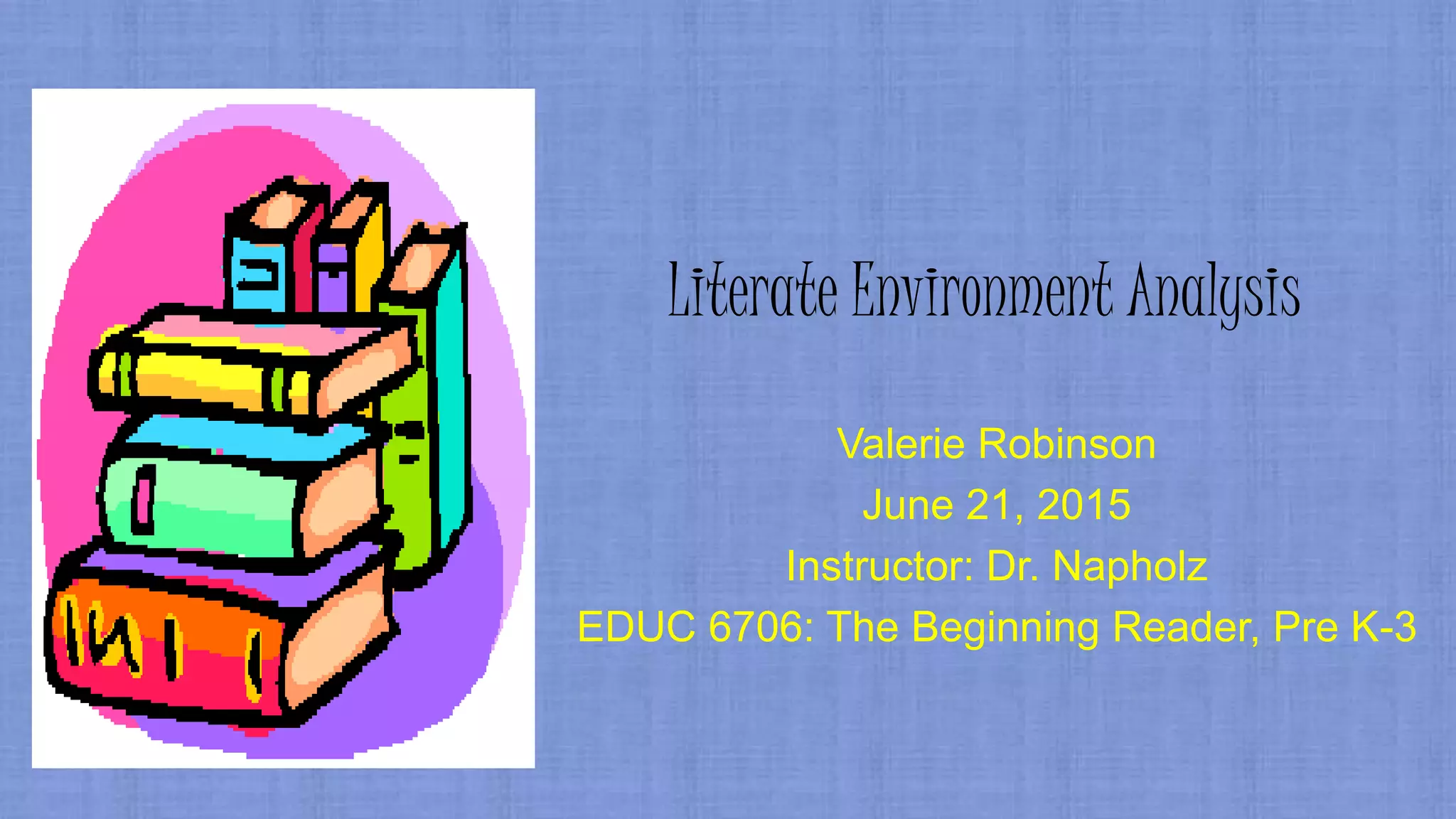
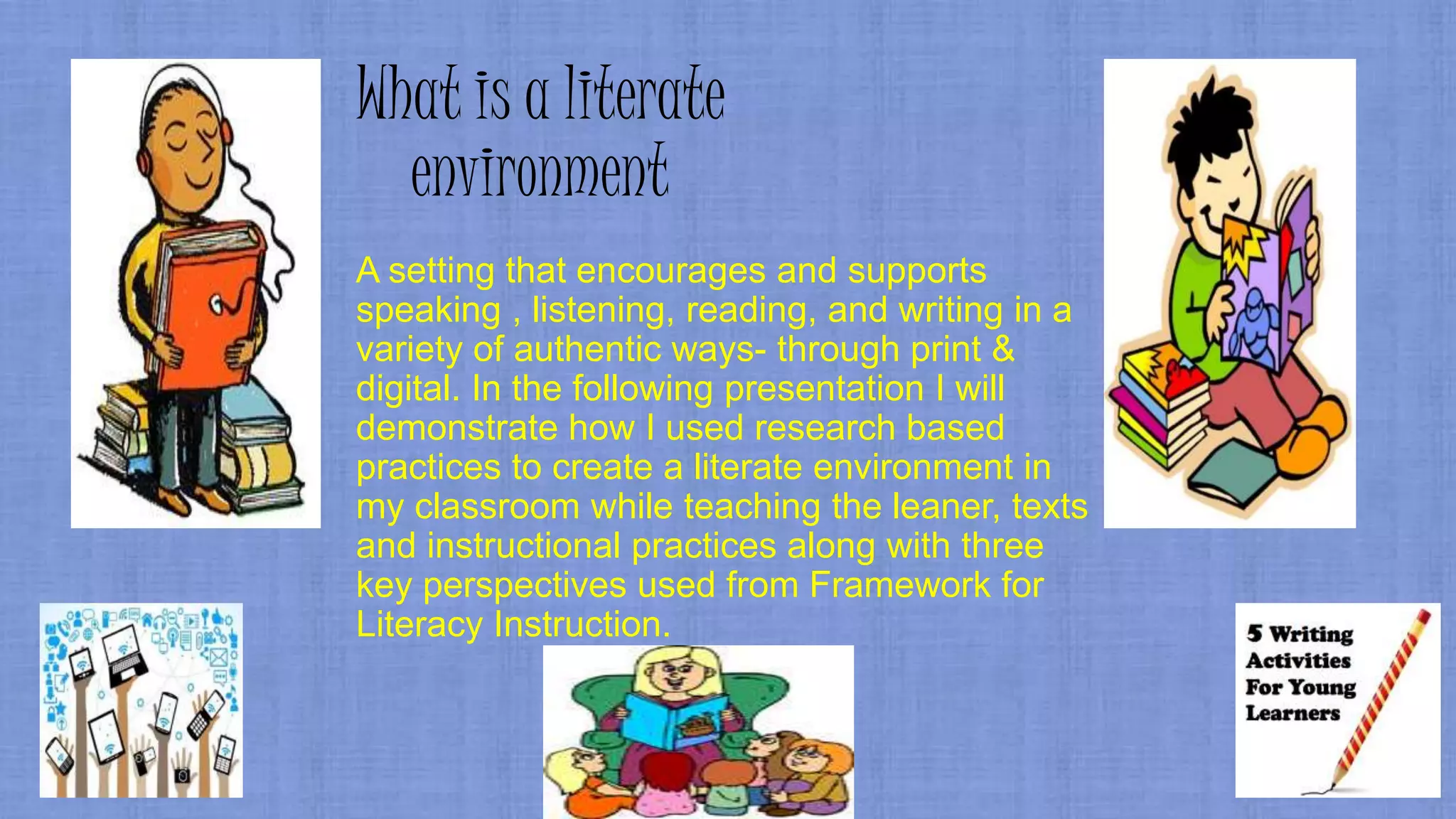
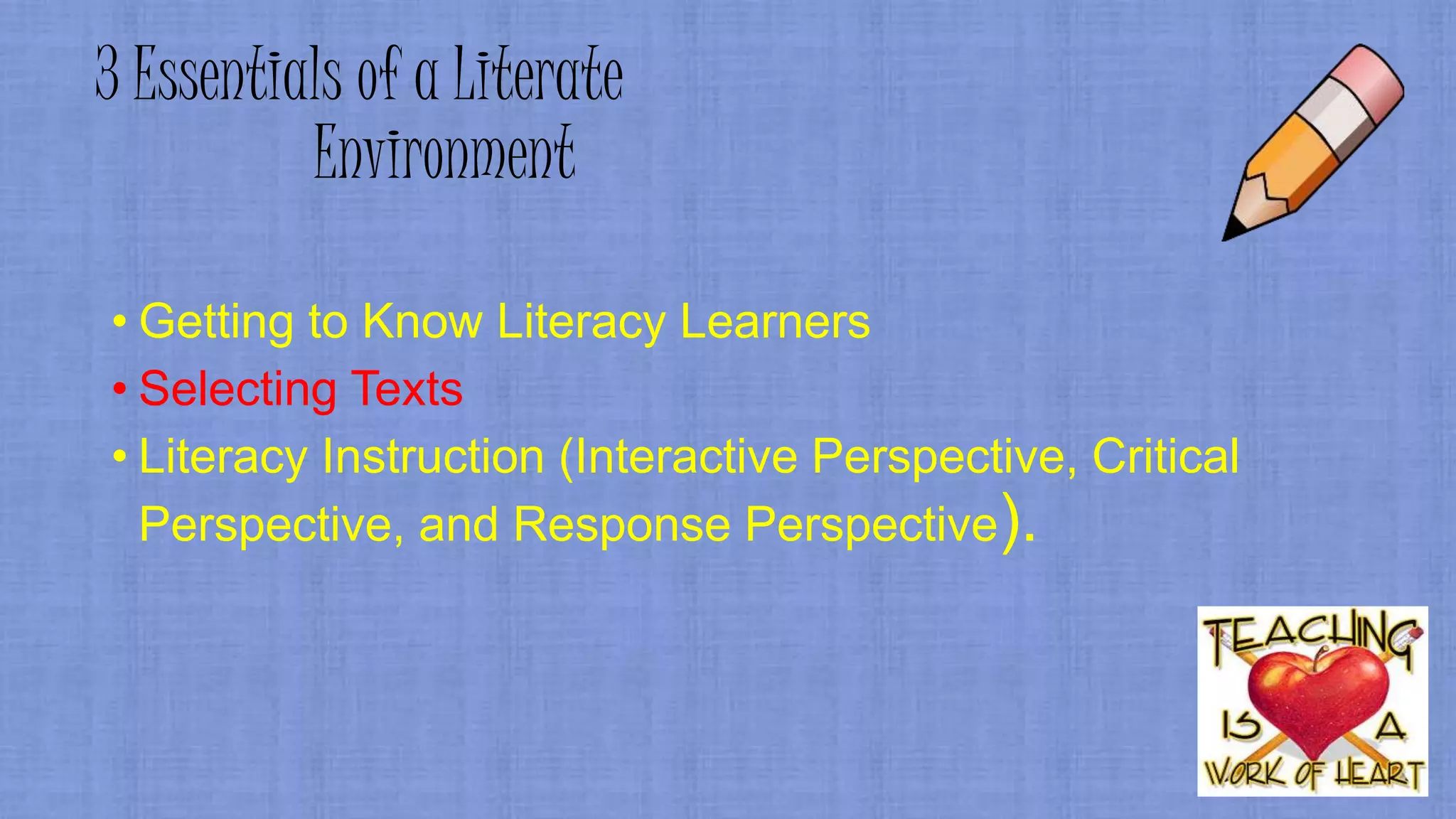
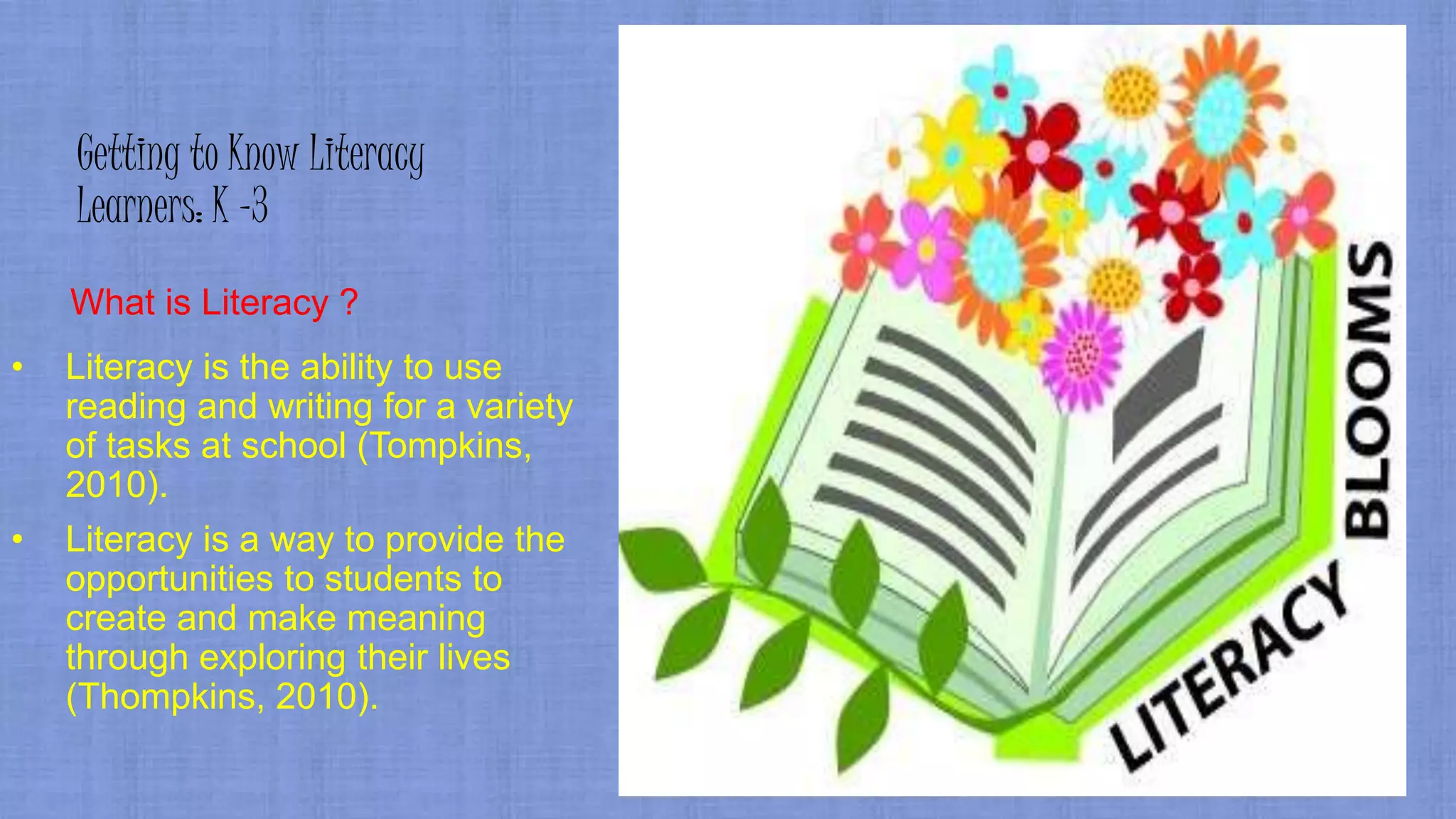
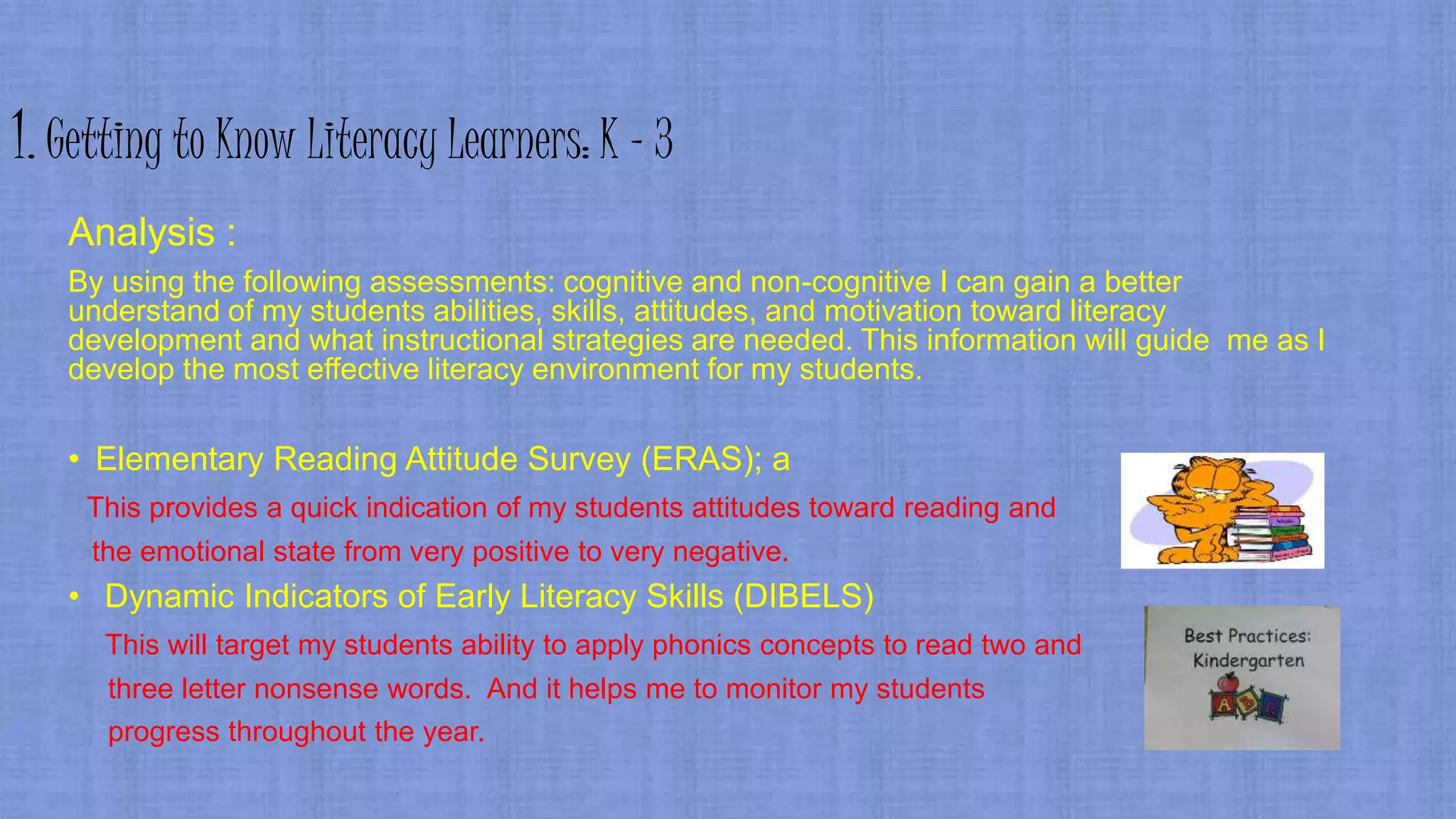
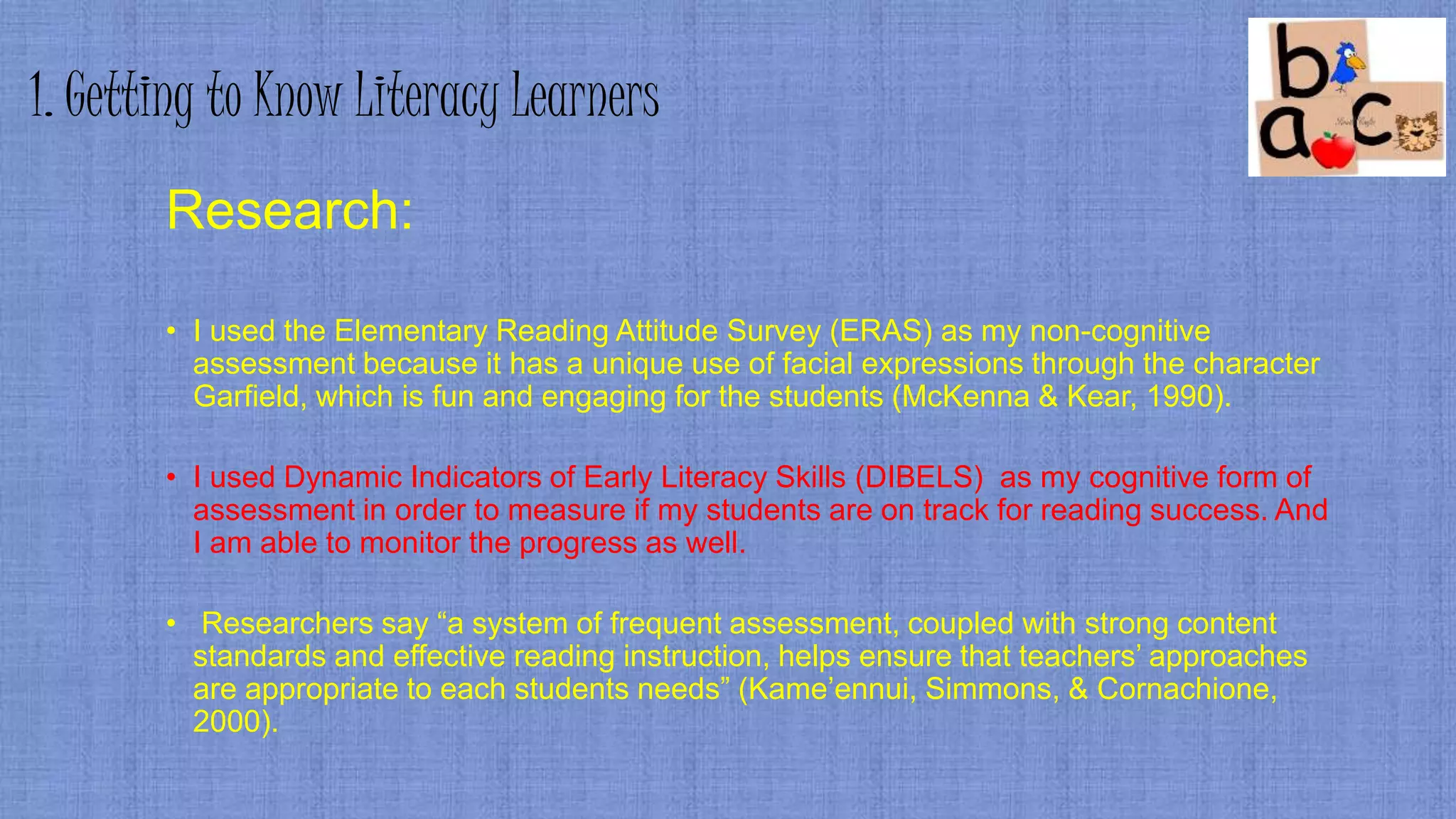
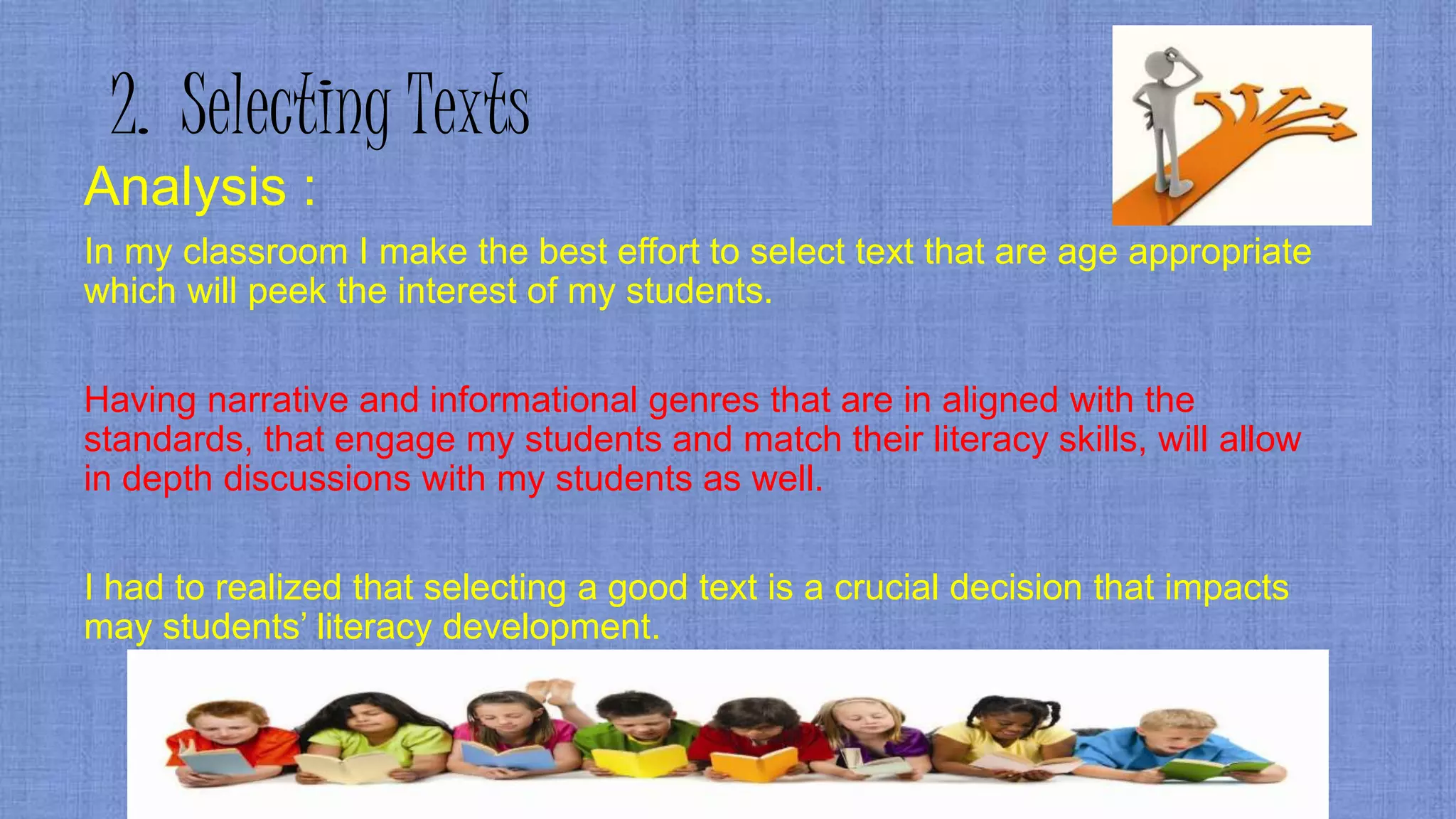
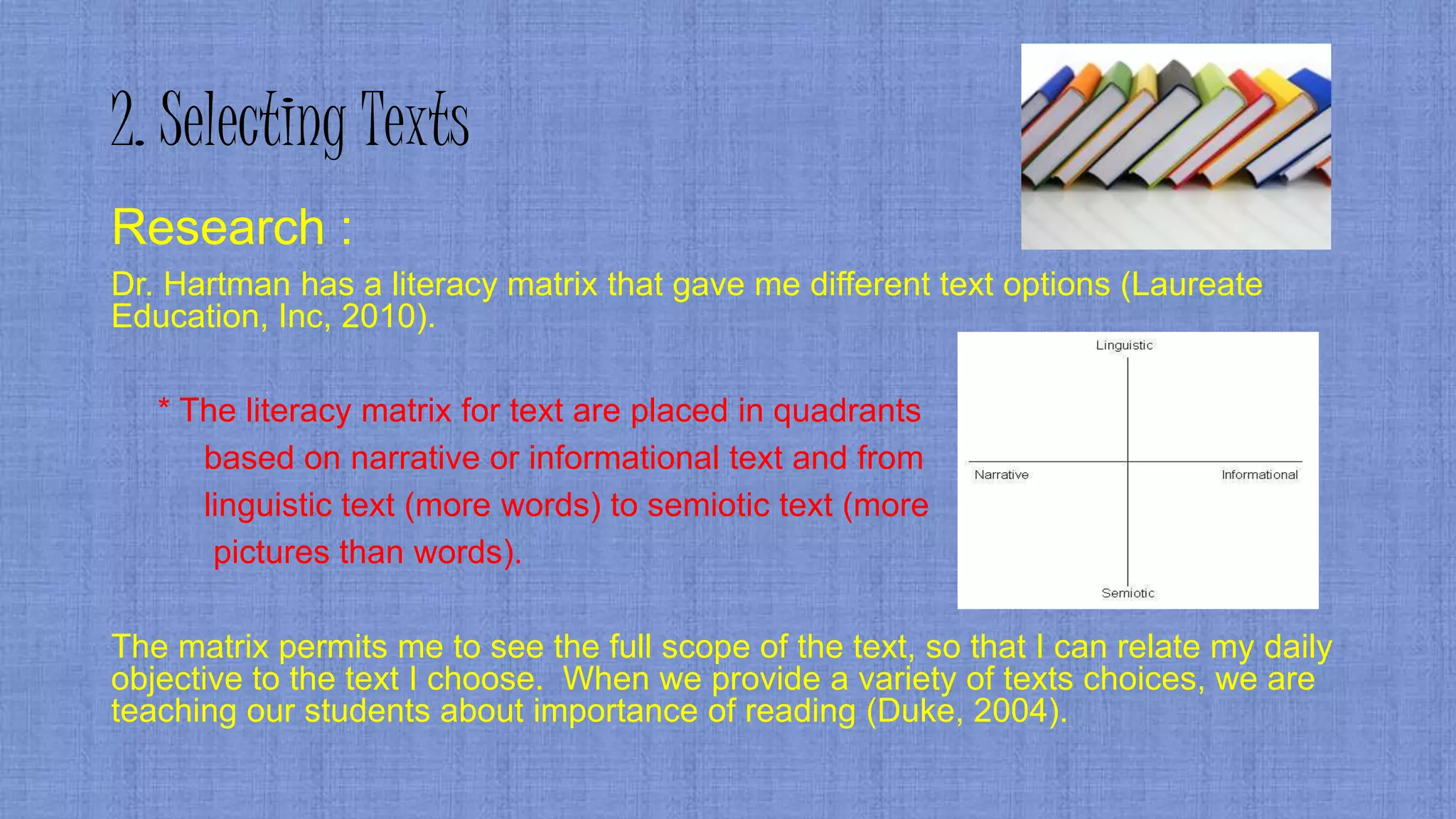
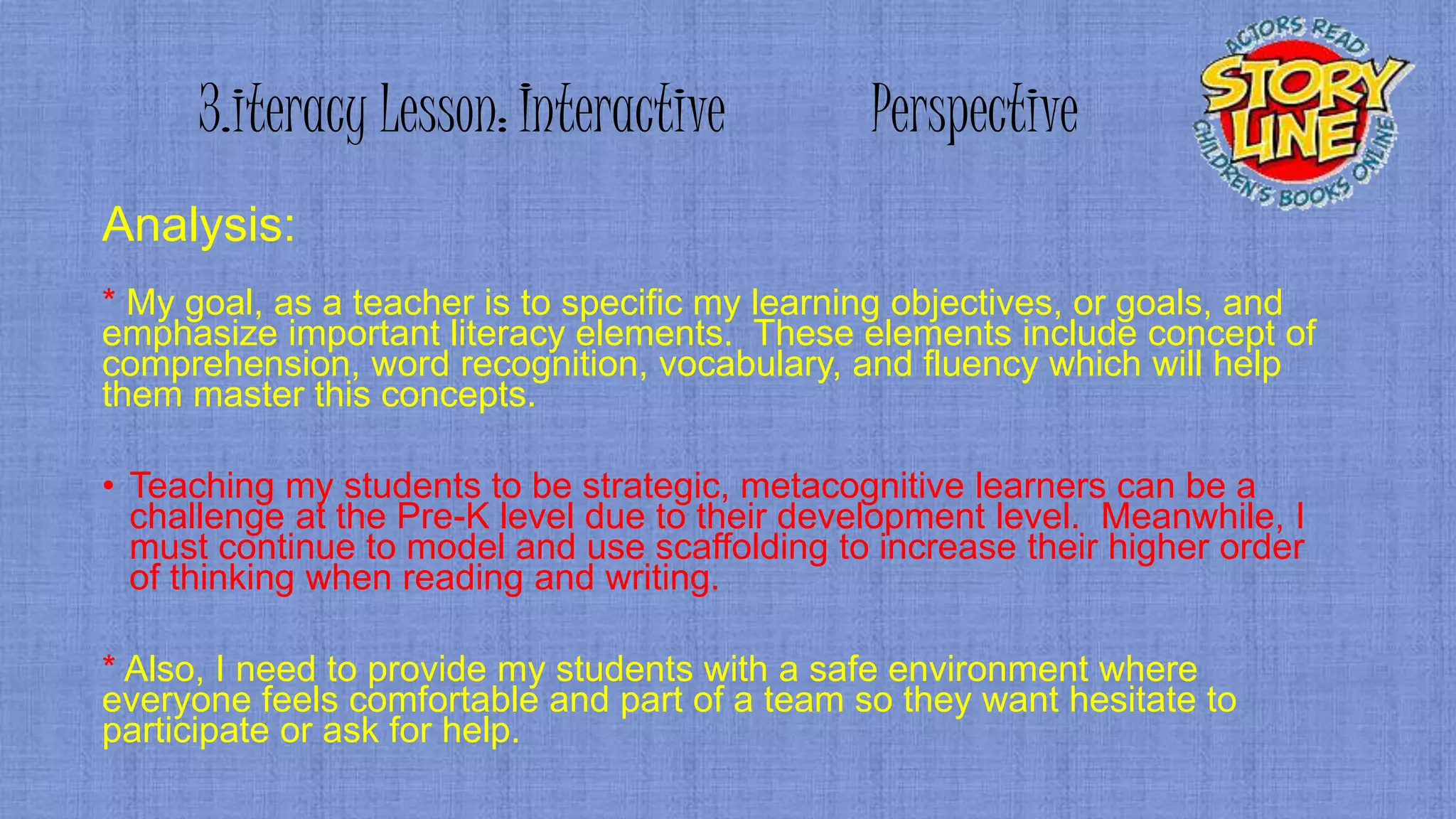

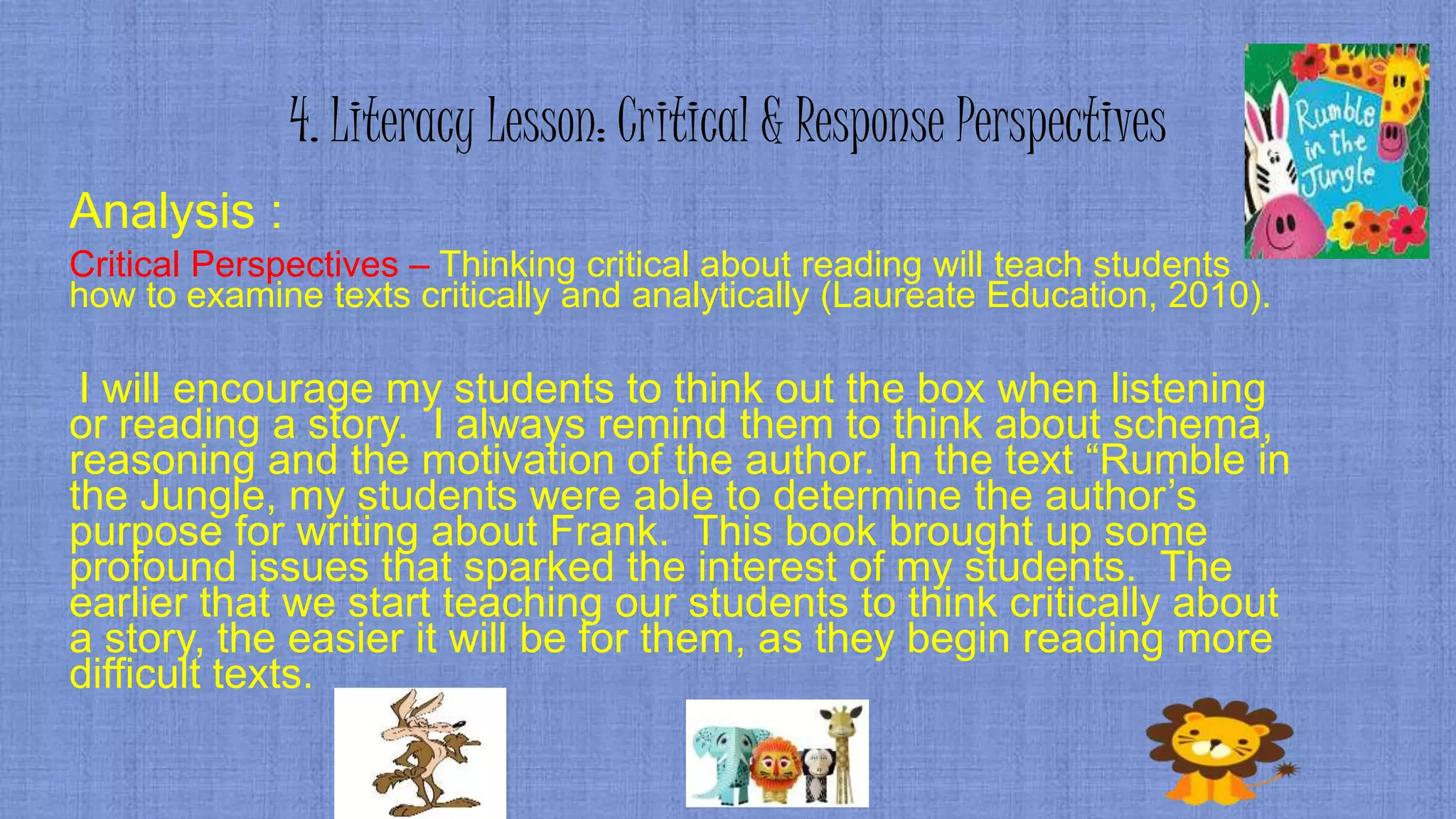
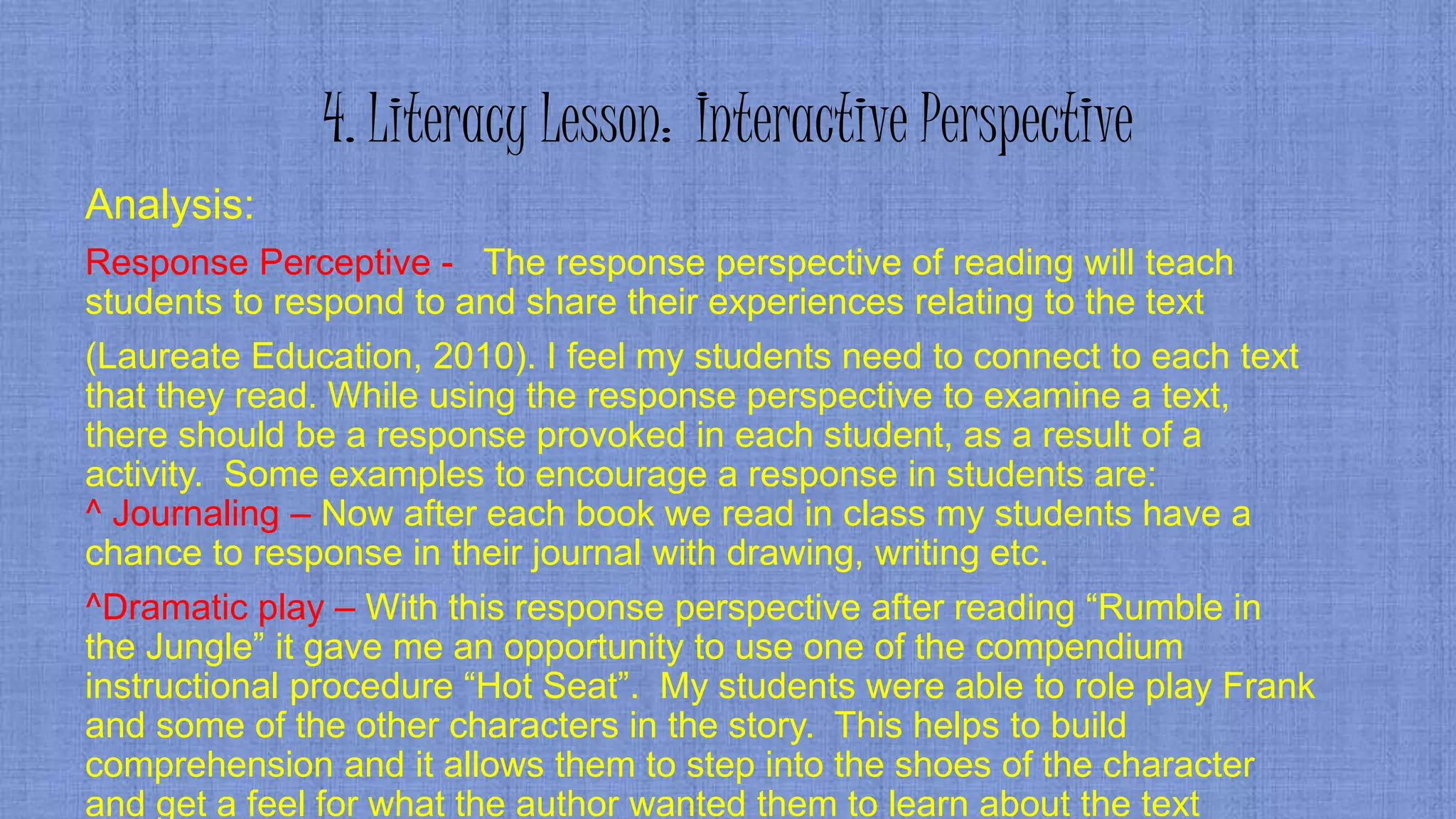
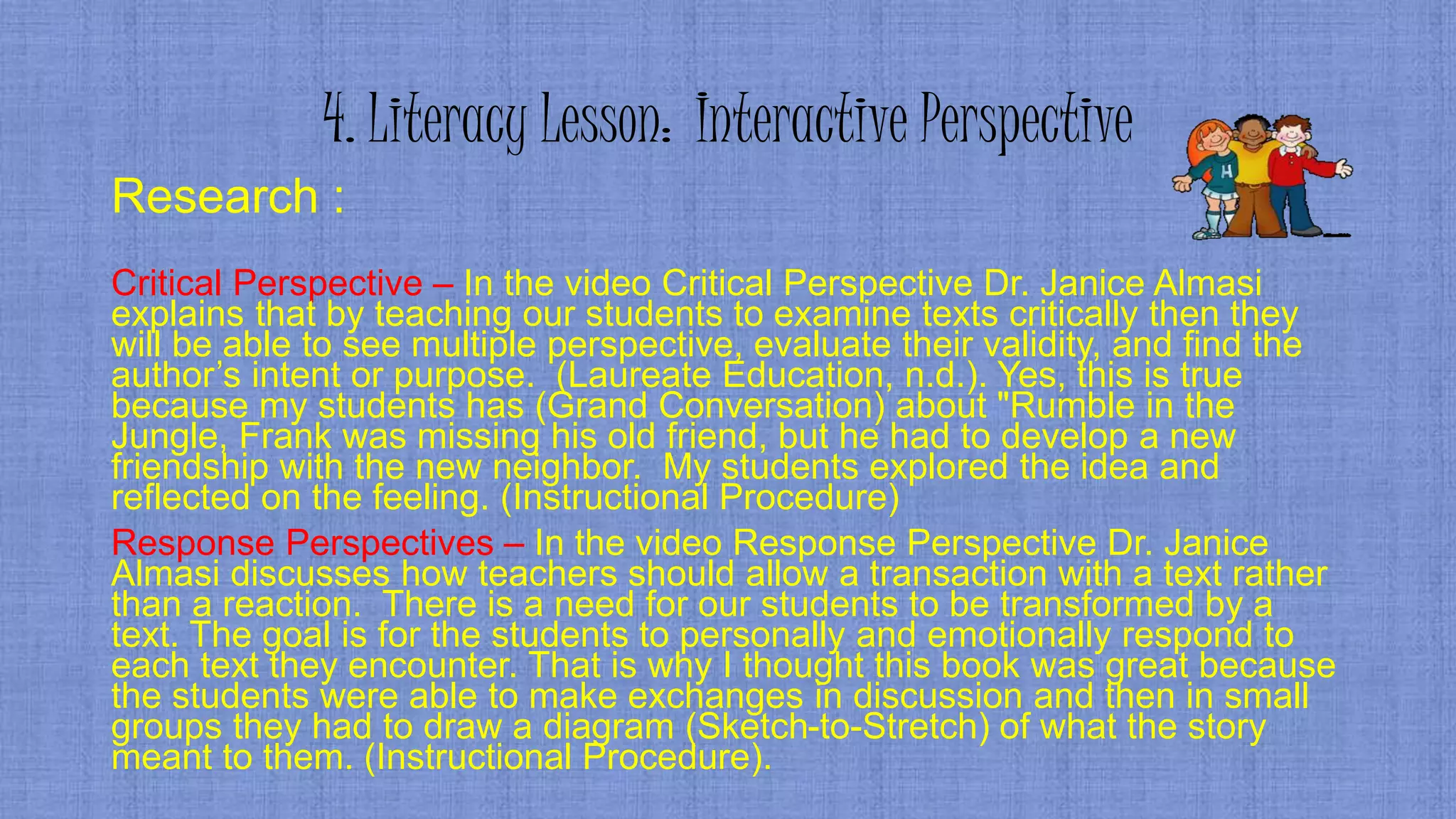
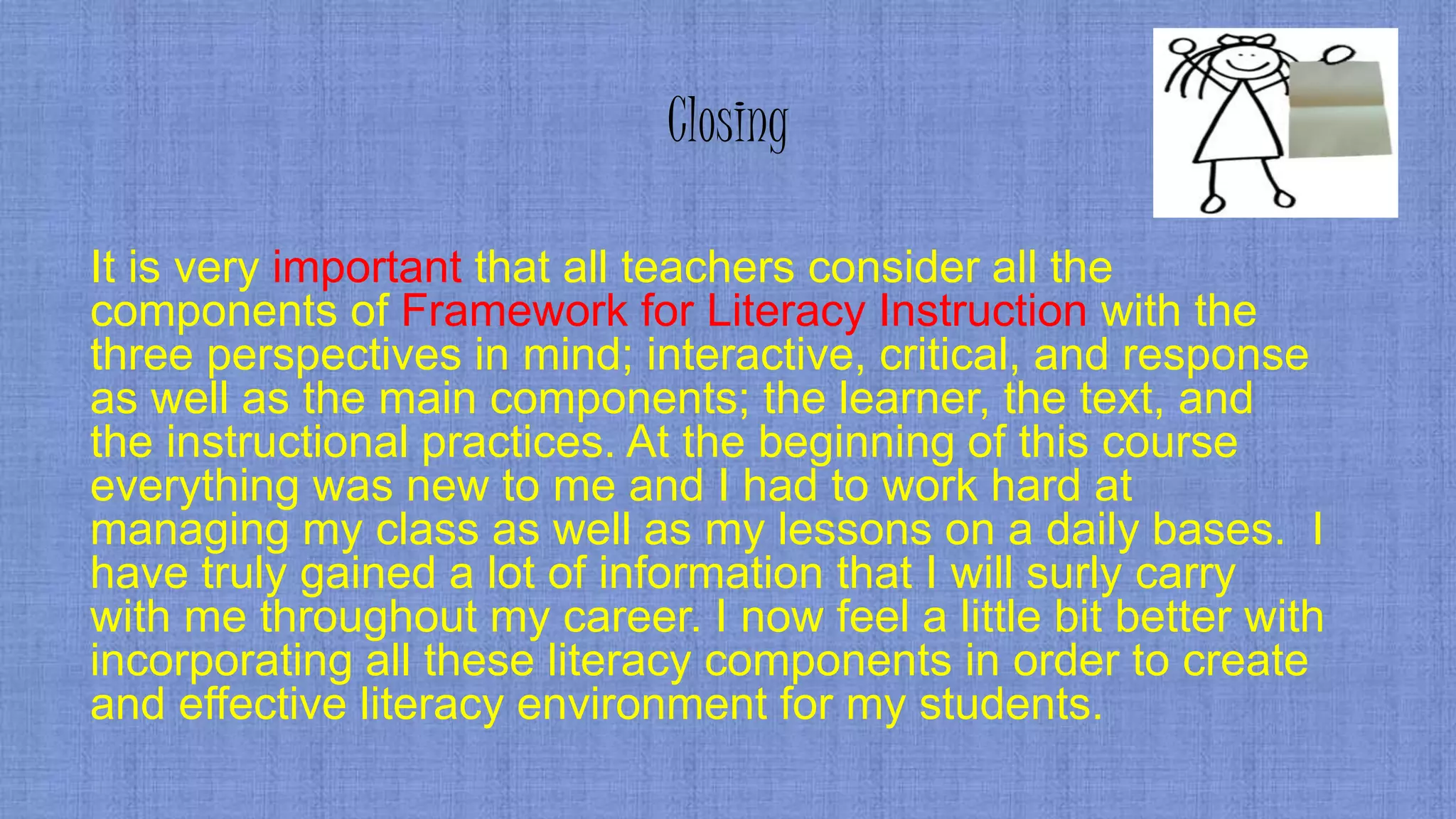

![References
• Afflerbach, P. (2012). Understanding and using reading assessment K–12 (2nd ed.). Newark, DE:
International Reading Association.
• McKenna, M. C., & Kear, D. J. (1990). Measuring attitude toward reading: A new tool for teachers.
The Reading Teacher, 43(9), 626--639.
•
Tompkins, G. E. (2010). Literacy for the 21st century: A balanced approach (5th ed.). Boston: Allyn
& Bacon.
• Laureate Education (Producer). (n.d.) A. Critical perspective. [Video file]. Retrieved from
https://class.waldenu.edu
• Laureate Education (Producer). (n.d.) B. Response perspective. [Video file]. Retrieved from
https://class.waldenu.edu
• Laureate Education (Producer). (n.d.). Virtual field experience™: Strategic processing [Video file].
Retrieved from https://class.waldenu.edu
• Laureate Education (Producer). (n.d.). Perspectives on literacy learning. [Video file]. Retrieved from
https://class.waldenu.edu
• Molden, K. (2007). Critical literacy, the right answer for the reading classroom: Strategies to move
beyond comprehension for reading improvement. Reading Improvement, 44(1), 50–56.](https://image.slidesharecdn.com/literateenvironmentanalysisforweek7-150616023030-lva1-app6892/75/Literate-environment-analysis-for-week-7-16-2048.jpg)